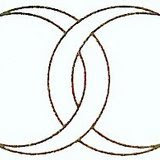
Blogroll Me! Coercive Games:
The Art Of Non Violent Warfare...along the lines of guerrilla gardening and such. I am surprised I haven't found this web site till now.
COERCIVE GAMES
Here's a bit of fun thinking about combining protest, games, and open source movements into a potent coercive tool for non-violent protest (in a post-Gandhi world). It's just some ideas that may or may not be of interest.
Traditional non-violent protest is dead as a means of reversing bad organizational behavior. It's easily ignored/overlooked in a media saturated environment and the methods of controlling and marginalizing it have become widely practiced/tolerated (from "free speech zones" to non-lethal weapons to crowdsourced identification of protesters). Further, shame doesn't work anymore as a means of dissuasion. Given these impediments, the revival of protest means rethinking how it is used as a coercive tool. It means going beyond attrition (boycotts, physical damage, etc.) and moral suasion (signage, marches, etc.) and into the realm of systemic disruption. Here's one approach.
In most large traditional organizations, whether they be corporations or bureaucracies, decision making is dominated by a small number of very powerful people protected by a phalanx of senior specialists. They are not democracies. Yet, in modern western societies, this elite group and their specialists are able to dissociate themselves from jobs when it comes to their private lives. They live unencumbered within our impersonal society. This window of vulnerability creates a yawning opportunity for innovative forms of disruptive non-violent protest. One that pierces the organizational and societal veil of anonymity for these individuals by turning them into systempunkts (vulnerable nodes within the targeted organization's network that would cause the most damage if disrupted). Essentially, if you can successfully deter/coerce individual decision makers in this decision making group, you will win (and quickly).
Early work on this type of protest can be seen in the work of 4Chan's Anonymous and China's human flesh search engine. Both of these open source movements have shown to be surprisingly powerful at targeting single individuals (and poor at disrupting organizations). By using thousands of contributers, they are able to gather intelligence information on an individual (and their family). In short, learn everything about the target down to bank account numbers. This then enables the movement to target the individual and their family with:
- Stalking and harassment. In the street, at a restaurant, or at school.
- Identity theft. From financial to professional. Publication of private information.
- Denial of communication. Flood phones, e-mail accounts, voice-mail, etc.
In short, any online group of sufficient size could launch an effort like this. However, to really zoom the effort and turn it into a coercive tool, one modification should be made. It should operate as an online game. Here's a potential template:
- Experience points for accumulating information. Pics snapped with a cell phone camera. Points for financial account information. Etc. Experience points translate into basic improvements in status which improves the weight of a contributor's vote (on the next target, the quests to open, etc.).
- Quests. Equivalent to counting coup on a tribal enemy. Draining the target's bank account. Gaining control of a voicemail system. Tagging the target with paint. Disabling the target's car. Quest achievement translates into special recognition (emblems, new tools, positions of leadership, etc.).
- Competition. Contests between individuals or groups to complete a given task within an alloted time period. As in first to....
Think in terms of this game running as a darknet (not visible to anyone but invited players and only those that have deeply enmeshed themselves in the game).







No comments:
Post a Comment